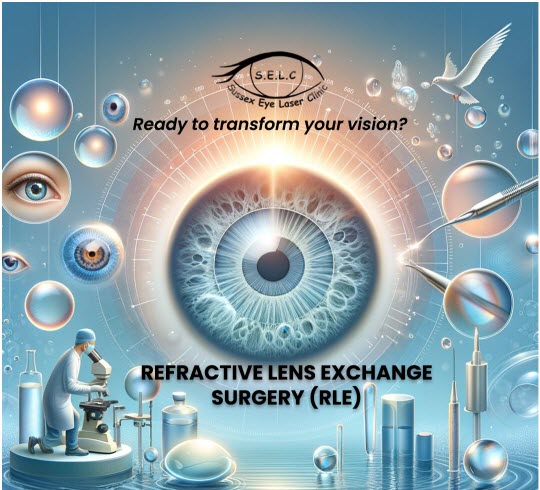Vision problems can be a significant hindrance to daily life, leading many individuals to explore alternatives beyond glasses or contact lenses. One increasingly popular option, especially for those aged over 50, is refractive lens exchange (RLE). This article explores the long-term benefits of RLE, shedding light on its advantages over conventional approaches.
Understanding Refractive Lens Exchange
Refractive lens exchange is essentially an adaptation of cataract surgery, a widely performed elective surgery. The surprising revelation is that lens replacement in RLE is akin to cataract surgery. The fundamental difference lies in the timing of the procedure-RLE is performed before the development of a cataract, preventing the natural lens from aging and affecting vision.
The Two-Step Procedure
The first step involves removing the natural lens before it transforms into a cataract. Despite being a routine operation conducted frequently in the UK, this step sets RLE apart from traditional cataract surgery. The second crucial step is refocusing the eye, as the removal of the natural lens leaves it out of focus. This is achieved by implanting a synthetic plastic lens, and in RLE, the trifocal or extended depth of focus lens is commonly used to give spectacle independence of patient’s choice.
Multifocal Lens Implants: A Visionary Advantage
Multifocal lens implants offer distinct advantages over standard cataract lens implants used in NHS procedures. These lenses, available in various shapes, sizes, and strengths, provide clear vision across different distances. With multifocal lens implants, individuals can enjoy clear sight in the mid-range, encompassing computer and television viewing, as well as close-up vision for reading without the need for reading glasses.
Notable Differences from Cataract Surgery
While RLE shares similarities with cataract surgery, there are significant distinctions. In both procedures, the natural lens is removed and replaced with an artificial intraocular lens (IOL). However, RLE introduces:
Sophisticated Pre-Operative Testing: RLE demands more advanced pre-operative testing to measure the eye’s optics accurately.
Specialized Lens Implants: The use of multifocal, extended depth of focus and toric lens implants sets RLE apart, offering enhanced vision correction.
Expertise Requirement: An experienced surgeon with a track record of low complication rates is essential for the success of RLE.

The Long-Term Benefits Unveiled
The multifocal and extended depth of focus lens implants and the advanced nature of the RLE procedure unlock a spectrum of clear vision possibilities. The ability to see clearly at various distances, from mid-range to close-up, significantly enhances the overall quality of life for individuals who undergo refractive lens exchange.
Conclusion
In the pursuit of improved vision and freedom from glasses or contact lenses, refractive lens exchange emerges as a compelling option. The procedure’s long-term benefits, coupled with the innovative use of multifocal and extended depth of focus lens implants, make RLE an attractive choice for those seeking a lasting solution to vision problems.
Frequently Asked Questions – Refractive Lens Exchange
Is refractive lens exchange suitable for everyone?
RLE is typically recommended for individuals over 50 experiencing age-related vision issues.
How long does the RLE procedure take?
The surgery itself usually takes around 15-20 minutes per eye, but pre-operative assessments may extend the overall time.
Are there any risks associated with refractive lens exchange?
As with any surgical procedure, there are potential risks, but having an experienced surgeon minimizes these risks significantly.
Can multifocal lens implants be customized to individual preferences?
Yes, multifocal lens implants can be tailored to meet individual vision needs.
Is RLE covered by insurance?
Generally insurance companies do not cover this procedure.
